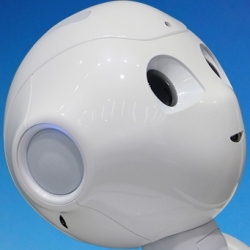
People worry if robots might start taking our jobs; it’s already happening. There’s no doubting the opportunity for businesses to reinvent themselves. But the societal impact of that could be huge. 3 of the world’s 10 largest employers are already replacing tens of thousands of workers with robots:
Foxconn, a key manufacturing partner for Apple, Google, and Amazon, is the world’s 10th largest employer and it has already replaced 60,000 workers with robots, according to a recent note written in part by analyst John Seagrim at CLSA.
Walmart, the third-largest global employer with 2.1 million workers, wants to replace its warehouse stock-checkers with flying drones that can scan miles of shelves in a fraction of the time.
And the US Department of Defense, the No.1 global employer, is already ;flying the world’s largest fleet of unmanned aerial vehicles – drones, basically – in its various Middle East conflicts. The US DoD has at least 7,362 RQ-11 Ravens in operation for instance.
That is likely the tip of the iceberg. This deliberately scruffy chart from CSLA of the 10 largest global employers shows the world’s biggest workforces shows the potential for axing workers in favour of machines:
Of those 10, only the UK’s National Health Service – with its massive army of doctors and nurses doing unrepetitive, unique tasks – looks like hostile territory for robots. The other nine are rich with rote, repetitive tasks that might be better performed by software.
Foxconn’s 60,000 robots are only a small fraction of its 1.3 million total workers. So we’re still at the beginning of our robotic future. But few people are aware of the scale of the coming revolution in work. Consider:
Citi and Oxford University predict that 77% of all jobs in China are at risk from automation.
57% of jobs across the 34 OECD countries are at risk of automation, according to Citi and Oxford.
The World Economic Forum has predicted that 5 million jobs could be destroyed globally by 2020.
IBM claims it has created a computer that is better at diagnosing cancer than a human, for example.
Even journalism is not immune – the Associated Press is already using AI software to write up company results.
The vision of mass unemployment created by robots isn’t a guarantee, of course. The optimistic vision of a robotic future is one where our mechanical helpers allow us to work 4-day weeks by slashing the workload, leaving us to spend most of our time in the pub or in front of the TV (let’s be honest). New technology tends to create more jobs than it destroys – every robot worker will need a maker, a manager, and a maintenance person.
But the pessimistic vision of the future is more inequality, cheap robots put the low-paid and middle classes out of work while reaping more and more profits for the factory masters and fatcats at the top of the chain. The US Bureau of Labor Statistics produced this chart showing that phenomenon in news publishing. The internet has created plenty of media jobs, but not as many as were destroyed in the print sector:
The Citi report warned that "the benefits of technological change are not being widely shared," and says advances in automation and robotics are likely to exacerbate the gulf between the 1% and the 99%.
Jim Snabe, a board member at WEF, set out this binary vision at the DocuSign Momentum conference in London this week, telling the audience:
There’s no doubt that the opportunity for businesses to reinvent themselves. But the societal impact of that can be – will be – huge. There’s a good and a bad version of that.
The bad version is one where we bet everything on that digital infrastructure and yet it’s not secure, we don’t know what privacy is, and jobs get killed faster than we create new ones. Then this digital revolution will just be an ordinary revolution. People won’t accept the fact that there’s no longer a need for them.
The good version of this is one where we begin to steer the innovation towards a path where we use the opportunity to get independent limited resources – we stop climate change, we empower 4 billion people who are today not connected to the world.
The optimistic vision sounds very optimistic and, unfortunately for everyone, it looks like the pessimistic vision is so far making better progress than its rival – particularly in China.
25% of all robots shipped in 2014 went to China: Two recent notes from CLSA and Bank of America Merrill Lynch draw attention to just how rapid the change is happening there. It a note on "Human Capital", BoAML says: "China has the fastest adoption of robots in the world and purchased over 57,000 industrial robots in 2014 (25% of global shipments). We believe China will witness a 25%+ CAGR in annual demand for new robots during 2014."
McDonald’s, which employs 1.9 million people to Walmart’s 2.1 million, could even embrace the robot. McDonald’s chief executive Ed Rensi told Fox Business that if minimum wage in the US rose, the fast-food chain would consider robots, according to CSLA’s Seagrim. "It’s cheaper to buy a $35,000 robotic arm than it is to hire an employee who is inefficient making $15 an hour bagging French fries," he told the broadcaster.
